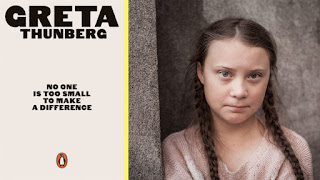(Filmography first issue cover)
‘Filmography’ is a new trimonthly bilingual film journal
from Kerala. Initiated by a group of film buffs this journal aspires to tread
an untrodden path that avoids film trivia and intends to give focused studies
and insights to the regional, national and global movies. Innovative in approach
and catchy in style, ‘Filmography’ is a re-run of the ‘little magazine’
movement of the 1970s and 80s for the simple reason that there is a niche space
for it between the mainstream glossy film magazines and the highly
intellectualized academic film journals. Recognizing the fact that the film
journals produced by the government agencies, despite their well-researched content
and attractive design and production, hardly reach the target audience except
for their public availability during the film festivals, Filmography tries to
fit into the gaps, complementing the discourses generated by the journals
belonging to the abovementioned categories.
The first issue of Filmography, which was recently released
at the 24th IFFK platform in Thiruvananthapuram gives the readers a
lot to look forward to. Apart from the short essays by eminent scholars the
journal has a few pages devoted for the lists of choicest films by
international figures like Susan Sontag. Though subjective is the list, the
reader could think of picking up a few for further watching in the available
archives in their own localities. If not they could really debate the issue why
they don’t have such archives in their vicinities. Hence, the journal does not
simply impart information but evokes a sort of aspiration among the
viewers/readers for bettering the immediate contexts of their film
production-dissemination-consumption cultures and circuits. Besides, the
editors have invited artists to engage themselves with the movies that have
influenced them so as to redo or rather recreate a film poster of the same in
their own fashion, opening up a way for the re-interpretation of the visual
culture disseminated through the film posters that at times attain cult status.
Sample story boards from classic movies sourced from the virtual archives
reproduced in the journal make the general as well as academic readers know the
films a little closer at the blueprint stage.
(Filmography content page)
The first edition has an erudite critique on the
majoritarian politics smuggled inadvertently into the parallel/art house movies
in India as they cater to a global demand for an exotic orientalism or else
reproduce the same ideology subconsciously in their movies. The essay written
by the noted scholar A.C.Sreehari minces no words as he splices open the
cinematic texts created by the doyens like Satyajit Ray. Though, there have
been mainstream criticism on Ray for ‘selling Indian poverty at the global
market’ Sreehari’s take is not on an accusatory level rather it works around
the theoretical analysis of orientalism and its deeper encroachments in the
cinematic imagination of the times. In the Malayalam section P.K.Surendran
writes on the movies of the master Abbas Kiarostami. Apart from this
wonderfully articulated article this section also traces the history of sound
recording/sound design in an article written by the master sound recordist, T.Krishnanunni.
A mandatory study of Jellikettu by K.G.Siju forwards a balanced view of the
movie which has received more bouquets than bricks even when it should have
been fifty-fifty. Malavika Nair’s take on film viewing is marred by the
disturbing subjective presence. Navitha Ravi M does a review of the movie
Thamasha using the feminist methodology in order to unpack the sexist body
shaming. It should have been a deeper analysis, one thinks as he finishes
reading it. My article on the film ‘Roudram 2018’ by the award winning
filmmaker Jayaraj is also included whose merit should be analyzed by the
readers and critics than I myself saying adulatory words about it.
The journal ‘Filmography’ is edited by Dr.Zeinul Hukuman and
coordinated by novelist and short story writer, V.H.Nishad. I do not think that
spending Rs.50/- for an issue once in three months for a journal like this is a
waste why because I am sure such journals belong to the category of
collectibles as they mark a period in our film discourse and return to the
brains from where they have originated. M.Govindan had initiated a series of
parallel magazines; though short-lived they all served their intellectual purpose
and became the markers of their times rather than the mainstream magazines.
Hence, I wish all the best to the first and the forthcoming editions of ‘Filmography.’
--JohnyML

































